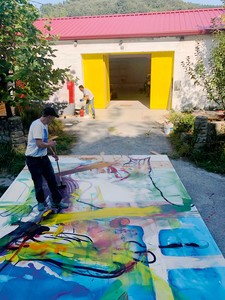
Albert Oehlen: Terrifying Sunset
The artist speaks with Mark Godfrey about his new paintings, touching on the works’ relationship to John Graham, the Rothko Chapel, and Leigh Bowery.
If I have to decide whether to make a beautiful painting or a new painting, I will choose new every time. That’s what the job of painting is for me. I want to make something that has not been there before.
—Albert Oehlen
Gagosian is pleased to present SEXE, RELIGION, POLITIQUE, a group of new paintings by Albert Oehlen.
Through bold expressionist brushwork, surrealist methodology, computer-generated lines, and an acute awareness of the self-conscious act of painting, Oehlen fearlessly engages with the history of abstraction, multiplying the potential of visual codes through processes of layering and erosion. Central to his expansive oeuvre is the innate freedom of the creative act.
Painted on aluminum sheets in oil and lacquer, these new works contain echoes of Oehlen’s previous series—crudely drawn figures, smears of artificial pigments, and combinations of various rules and constraints—yet yield entirely new results. The paintings feature dynamic black lines and forms over fields of bright egg-yolk yellow. Sometimes the black paint is viscous like tar, and at others it is matte and opaque, as Oehlen seamlessly transitions between thick fluidity and sharp angularity. The paintings’ titles are as enigmatic as they are evocative, from King Inna The Jungle and Walking Jewelry Store to Zungguzungguguzungguzeng (all 2018).
In many of the works, Oehlen paints over sections of black with the thinner yellow paint, producing ghostly, greenish shapes. Fragments of extremities, like flailing limbs and jutting branches, appear momentarily, only to dissolve, drip, or simply disappear. In this way, the compositions recall the Lascaux cave paintings in Montignac, France. Discovered in 1940, these Paleolithic paintings depict various animals, plants, and human figures, interspersed with elegantly placed dots and lines. When crowds of tourists first began to visit the caves, changes in air quality caused lichen and fungus to obscure the paintings, leading to the closing-off and restoration of the caves. Mirroring this trajectory, Oehlen’s new paintings poignantly reveal tensions between creation and erasure, moisture and dryness, capturing the urgency of artistic gesture, as well as the sorrow of its impending disappearance.
Shown together at Gagosian and Galerie Max Hetzler, Paris, this new body of work unapologetically reveals Oehlen’s ongoing resistance to painterly expectation.
Albert Oehlen: Cows by the Water is currently on view at the Palazzo Grassi, Venice, through January 6, 2019. A solo exhibition of Oehlen’s work will also open at the Aïshti Foundation, Beirut, on October 21, 2018.

The artist speaks with Mark Godfrey about his new paintings, touching on the works’ relationship to John Graham, the Rothko Chapel, and Leigh Bowery.
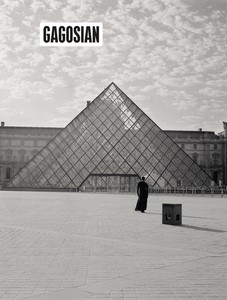
The Summer 2021 issue of Gagosian Quarterly is now available, featuring Carrie Mae Weems’s The Louvre (2006) on its cover.
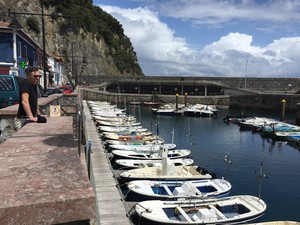
Albert Oehlen speaks to Mark Godfrey about a recent group of abstract paintings, “academic” art, reversing habits, and questioning rules.
This film by Albert Oehlen, with music by Tim Berresheim, takes us inside the artist’s studio in Switzerland as he works on a new painting.
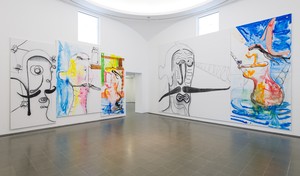
Hans Ulrich Obrist interviews the artist on the occasion of his recent exhibition at the Serpentine Galleries, London.

The artist met with art historian Christian Malycha to discuss his newest paintings.
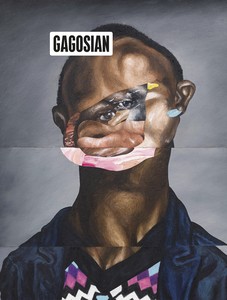
The Fall 2019 issue of Gagosian Quarterly is now available, featuring a detail from Sinking (2019) by Nathaniel Mary Quinn on its cover.
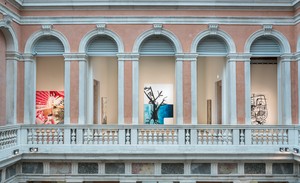
At the Palazzo Grassi, Venice, a career-spanning exhibition of paintings by Albert Oehlen, entitled Cows by the Water, went on view in the spring of 2018. Caroline Bourgeois, the curator of the exhibition, discusses how the show was organized around the artist’s relationship to music.